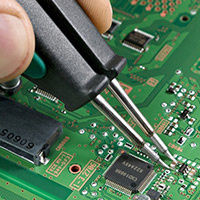

The Importance of Mirror Glass Quality A Reflection on Its Significance
Mirror glass is an essential component in various applications, from home decor to automotive industries and even scientific instruments. The quality of mirror glass plays a crucial role in its functionality, aesthetic appeal, and overall durability. Understanding the aspects that contribute to high-quality mirror glass can help consumers make informed choices, ultimately leading to better products and an enhanced user experience.
First and foremost, the quality of mirror glass is determined by its reflective properties. A high-quality mirror should provide a clear and accurate reflection. This is achieved through the use of premium glass and a silver or aluminum backing, which enhances reflectivity. Inferior mirror glass often results in distorted reflections, which can be frustrating for users, especially in everyday applications such as dressing mirrors or cosmetic mirrors. The clarity and precision of the reflection become even more critical in professional settings, such as dental or medical practices, where accuracy can impact the quality of work.
Moreover, the thickness of the glass contributes significantly to its quality. Thicker glass is generally more durable and less prone to warping, which is crucial for maintaining an accurate reflection over time. Thinner mirrors may be less expensive, but they are also more susceptible to damage and distortion. High-quality mirror glass typically features a thickness of at least 1/4 inch, ensuring longevity and consistent performance.

Another important aspect of mirror glass quality is the coating process. The backing layer, usually made of silver or aluminum, must be applied uniformly to ensure even reflectivity. High-quality mirrors undergo stringent manufacturing processes to guarantee that the coating is free from imperfections and provides optimal reflectivity. Additionally, some manufacturers offer unique enhancements, such as anti-fog or water-resistant coatings, which add value and functionality to the mirror. Such features are particularly beneficial in environments like bathrooms or kitchens, where steam and moisture can compromise visibility.
Furthermore, the edgework of the mirror plays a significant role in its overall quality and safety. High-quality mirrors often have polished or beveled edges, which not only enhance the aesthetics but also reduce the risk of injury from sharp edges. Cheaper mirrors might have rough or unfinished edges, posing a safety hazard and diminishing the overall appeal of the product. Investing in mirrors with superior edge finishing contributes to a safer and more visually pleasing environment.
When it comes to aesthetics, the quality of the mirror glass can elevate the style of a space. Whether it’s a vintage-inspired framed mirror or a sleek modern bathroom fixture, the quality of the glass impacts how light interacts with the space. High-quality mirrors can enhance natural light, making rooms appear more spacious and inviting. Therefore, when selecting mirror glass for decorative purposes, one must consider not only the style but also the quality to maximize the visual impact.
In conclusion, the quality of mirror glass is of paramount importance across various applications. From maintaining accurate reflections to ensuring durability and aesthetic appeal, a higher standard of quality contributes significantly to user satisfaction. Consumers should prioritize quality over cost when choosing mirror glass, as the benefits of investing in high-quality products far outweigh the initial savings from purchasing inferior options. By understanding the critical components that define mirror glass quality, individuals can make informed decisions that lead to better experiences, whether in everyday use or specialized settings. Ultimately, quality mirror glass is a reflection of both functionality and style, serving as an integral part of our daily lives.